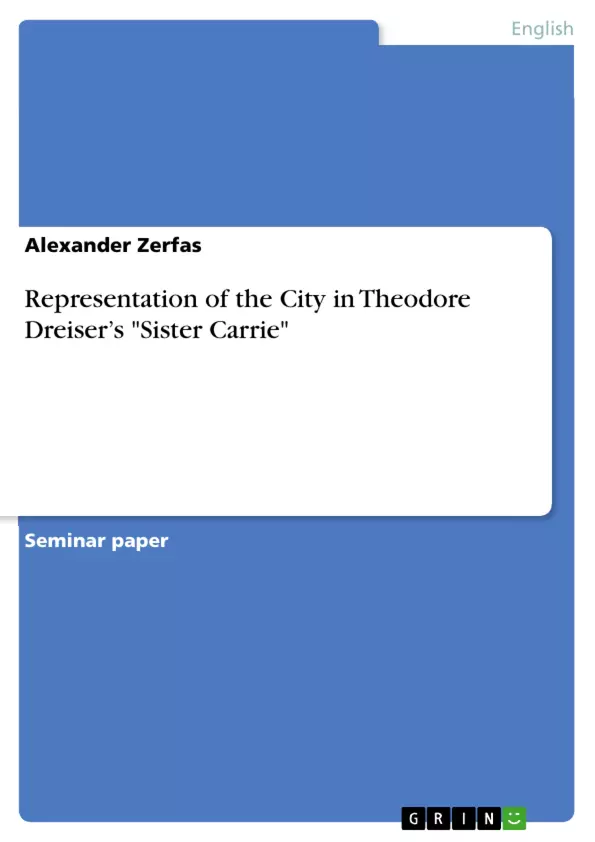In this paper I intend to elaborate on the question of how the city is depicted in Theodore Dreiser’s "Sister Carrie" including the characteristics Dreiser allocates to the city of Chicago and New York and the way of how the city influences Carrie’s personality. All propositions provided will be based on my own perceptions and interpretations of different quotations from the text. A brief conclusion will sum up the results of this paper.
Inhaltsverzeichnis (Table of Contents)
- Introduction
- The Imaginary City
- The City as a Place of Consumption
- Representation of Chicago
- Representation of New York
- Conclusion
Zielsetzung und Themenschwerpunkte (Objectives and Key Themes)
This paper aims to explore the portrayal of the city in Theodore Dreiser's Sister Carrie. Specifically, it examines the characteristics Dreiser attributes to Chicago and New York, and how the city influences Carrie's personality. The paper analyzes how the city functions as a catalyst for Carrie's transformation from a naive country girl to a woman driven by materialism and ambition.
- The contrast between the real and the imaginary city.
- The city as a place of consumption and the influence of consumerism on Carrie's character.
- The role of the city in shaping Carrie's ambitions and desires.
- The relationship between the city and the American Dream.
- The impact of urban life on the individual.
Zusammenfassung der Kapitel (Chapter Summaries)
The introduction provides context for the study, highlighting the significance of the city in American literature and the role of urbanization in shaping the American Dream. It introduces Sister Carrie as a key text in this context and outlines the paper's focus on the portrayal of the city. It also mentions the role of realism and naturalism in shaping the novel.
The second chapter, "The Imaginary City," explores the clash between Carrie's initial idealized vision of Chicago and the reality of her experience. It examines how the city is presented through the lens of both Carrie's naive expectations and the more realistic depiction offered by Dreiser.
The third chapter, "The City as a Place of Consumption," focuses on how Carrie's encounters with the city's consumer culture influence her transformation. It explores how her exposure to luxury goods, fashion, and the city's elite shapes her aspirations and her drive for material success.
Schlüsselwörter (Keywords)
This paper explores key concepts such as the city as a social and economic environment, the American Dream, realism and naturalism in literature, consumerism, and the impact of urban life on individual identity. These themes are analyzed through the lens of Theodore Dreiser's Sister Carrie, focusing on the protagonist's journey and her evolving relationship with the city.
- Quote paper
- Alexander Zerfas (Author), 2014, Representation of the City in Theodore Dreiser’s "Sister Carrie", Munich, GRIN Verlag, https://www.grin.com/document/372232



